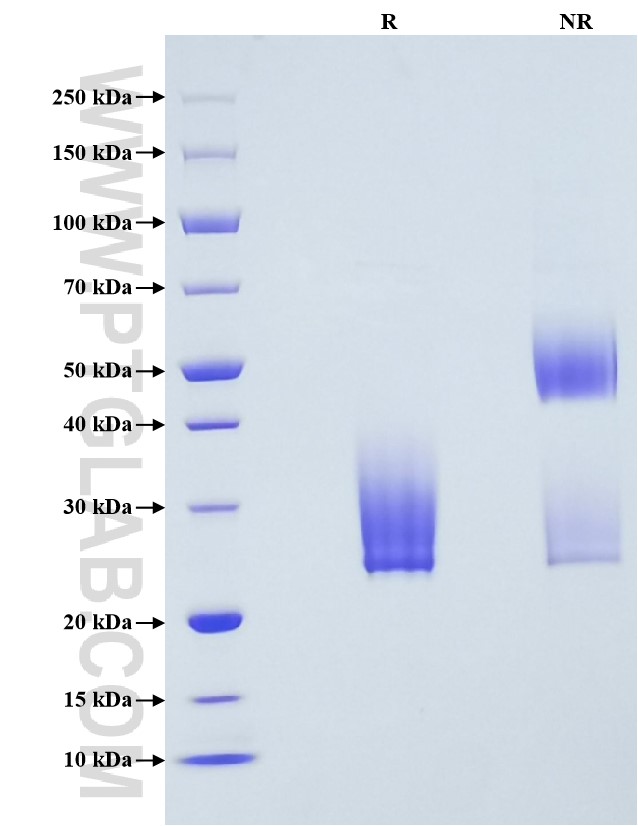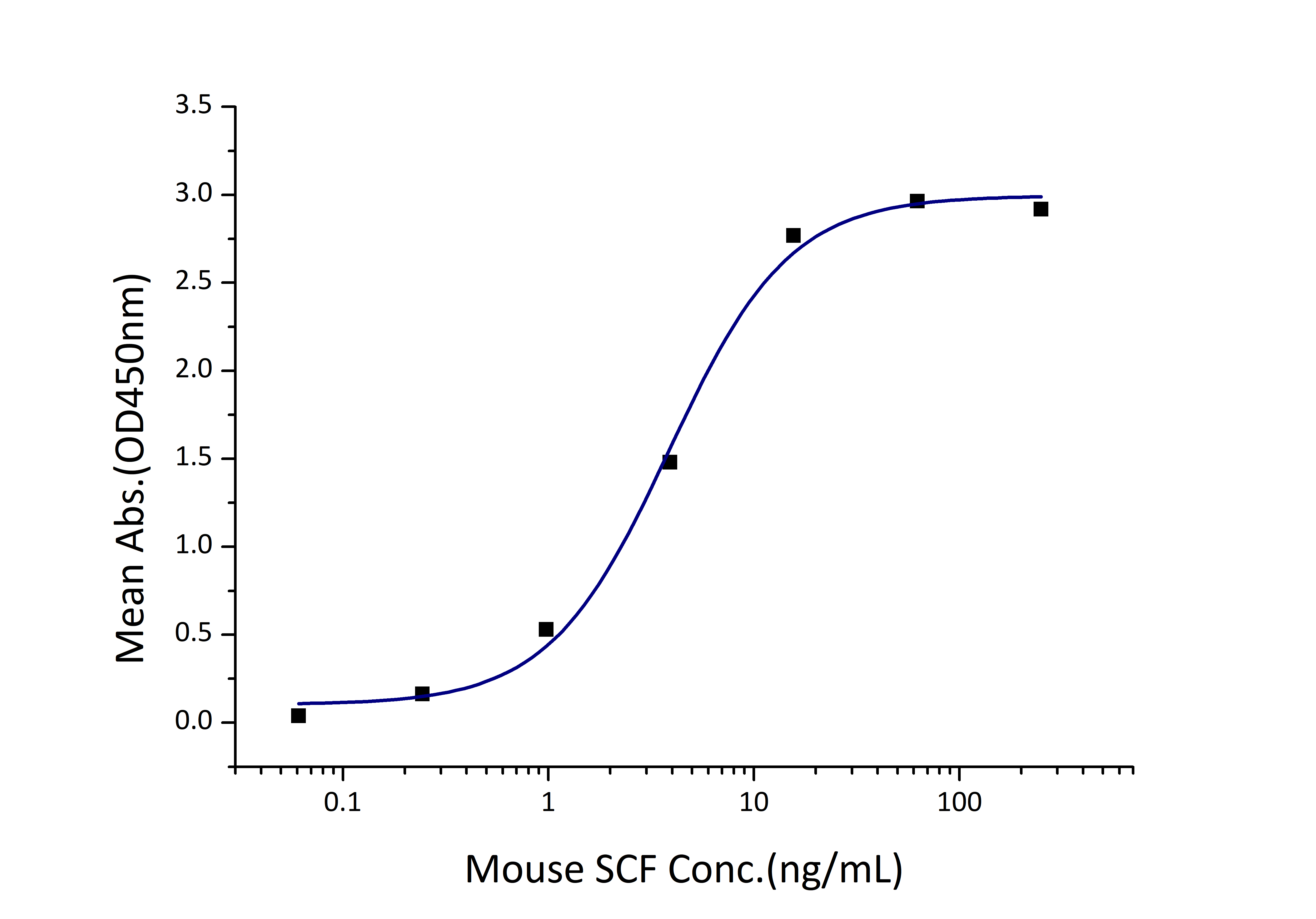Recombinant Mouse SCF protein (His Tag)
种属
Mouse
纯度
>95 %, SDS-PAGE
标签
His Tag
生物活性
EC50: 2-8 ng/mL
验证数据展示
产品信息
| 纯度 | >95 %, SDS-PAGE |
| 内毒素 | <0.1 EU/μg protein, LAL method |
| 生物活性 |
Immobilized Mouse CD117 (His tag) at 1 μg/mL (100 μL/well) can bind Mouse SCF (His tag) with a linear range of 2-8 ng/mL. |
| 来源 | HEK293-derived Mouse SCF protein Lys26-Ala189 (Accession# P20826-1) with a His tag at the C-terminus. |
| 基因ID | 17311 |
| 蛋白编号 | P20826-1 |
| 预测分子量 | 22.3 kDa |
| SDS-PAGE | 25-35 kDa, reducing (R) conditions |
| 组分 | Lyophilized from 0.22 μm filtered solution in PBS, pH 7.4. Normally 5% trehalose and 5% mannitol are added as protectants before lyophilization. |
| 复溶 | Briefly centrifuge the tube before opening. Reconstitute at 0.1-0.5 mg/mL in sterile water. |
| 储存条件 |
It is recommended that the protein be aliquoted for optimal storage. Avoid repeated freeze-thaw cycles.
|
| 运输条件 | The product is shipped at ambient temperature. Upon receipt, store it immediately at the recommended temperature. |
背景信息
SCF(Stem cell factor) also known as mast cell growth factorang kit ligand, is a hematopoietic growth factor. It plays an role in hematopoiesis (formation of blood cells), spermatogenesis, and melanogenesis. SCF is expressed in where hematopoiesis takes place, such as the fetal liver and bone marrow. SCF binding to c-kit ligand(CD117)causes the receptor to homodimerize and auto-phosphorylate at tyrosine residues. SCF and c-kit ligand are up-regulated in human malignancies including gastrointestinal stromal tumor, breast cancer, hematopoietic cell, myeloid leukaemia, and glioma. The SCF/c-kit pathway also plays a rolein the regulation of cell survival and proliferation, stem cell maintenance, mast cell development, migration.SCF and c-kit were confirmed as key role in hematopoietic function in adult mice.
参考文献:
1.M Ogawa. et al.(1991)J Exp Med. 174(1): 63-71. 2.Gu Y. et al.(2011) PLoS One. 6(10): e25984. 3.Pedersen M. et al.(2008) Biochem Biophys Res Commun. 377(1): 98-103. 4.Talaiezadeh A. et al. (2012) Contemp Oncol (Pozn). 16(4): 306-9. 5.Bai CG. et al. (2012) World J Gastroenterol.18(23): 2929-37. 6.Lennartsson J. et al. (2012) Physiol Rev. 92(4): 1619-49. 7. Liang J. et al.(2013) Int J Biol Sci. 9(5): 435-43.

